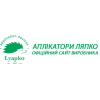Application therapy Lyapko in the prevention and treatment of cardiovascular diseases
1 Causes of cardiovascular disease
2 Major diseases of the heart and blood vessels
7 Psychosomatics of heart diseases
8 Physiotherapeutic methods of treatment for diseases of the cardiovascular system
9 Application therapy Lyapko in the prevention and treatment of cardiovascular diseases
Causes of cardiovascular disease
Cardiovascular diseases of atherosclerotic origin, especially coronary heart disease (CHD), are the leading cause of premature death worldwide. But by following preventive measures aimed at eliminating risk factors and improving the treatment of existing diseases, about 80% of premature heart attacks can be prevented. Preventive measures should be carried out throughout life, from birth to old age.
The main cause of cardiovascular diseases is a violation of lipid metabolism, leading to atherosclerosis. Atherosclerosis is characterized by the formation of plaques that narrow the lumen of blood vessels, this process can lead to thrombosis, cessation of coronary blood flow and, as a result, to acute myocardial infarction.
As well as various diseases of the spine, a sedentary lifestyle, which leads to a loss of elasticity of the vascular walls, regular stress, psycho-emotional overstrain, neurosis, depression, heredity.
According to WHO, the main risk factors for sudden death are: arterial hypertension, hypercholesterolemia (dyslipidemia) and smoking.
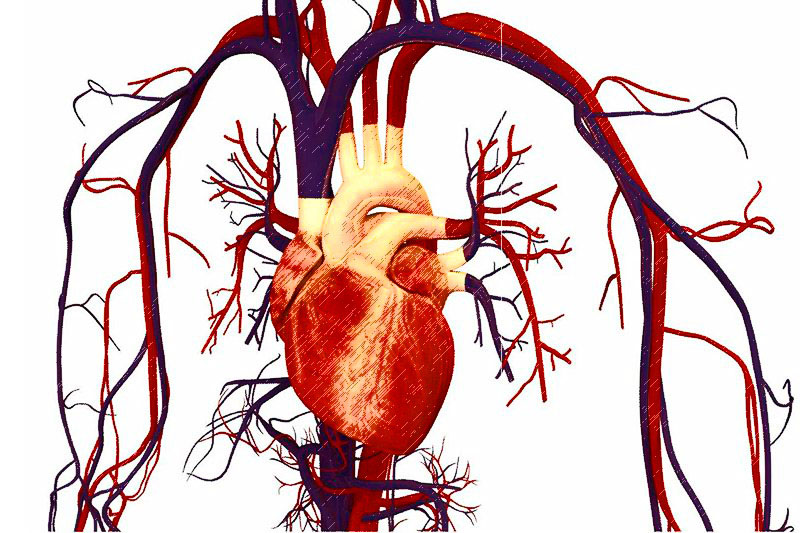
Major diseases of the heart and blood vessels
The list of diseases of the heart and blood vessels is a large list, we list only the most basic and common pathologies:
- IHD (ischemic heart disease) and its complications - heart attack, angina pectoris, cardiosclerosis;
- hypertonic disease;
- arrhythmias - heart rhythm disturbances;
- heart defects - congenital and acquired;
- heart failure;
- infectious and inflammatory pathologies of the heart - endo-, myo-, pericarditis;
- inflammatory vascular pathologies;
- atherosclerosis;
- blood clotting disorders, etc.
Symptoms of heart disease
Diseases of the heart and blood vessels can be manifested by the following symptoms:
- pain in the chest, behind the sternum, radiating to the shoulder blade, left arm; heaviness in the region of the heart;
- dyspnea;
- swelling of the legs, increasing in the evening;
- dizziness;
- palpitations, feeling of fear.
The presence of these and other symptoms is a reason to visit a cardiologist.
Diagnostics
A specialist to identify the type of disease will conduct a survey, examine the patient, and be sure to prescribe an electrocardiogram of the heart.
If necessary, additional instrumental research methods are prescribed: echocardiography, coronary angiography, blood pressure monitoring, etc.
Standard methods of laboratory diagnostics are also prescribed: general and biochemical analysis of blood, urine and feces. Which allow you to identify changes in the chemical composition of biological materials, the presence of an inflammatory process.
Treatment Methods
Treatment of diseases of the cardiovascular system is carried out individually, depending on the diagnosis, the characteristics of its course. When the pathology is at the initial stage, it is enough to take medication, adherence to proper nutrition, daily routine, with the exception of heavy physical and psycho-emotional stress.
But in severe cases, surgery is sometimes required.
Directions of prevention
Prevention measures can be divided into 2 areas:
- Primary prevention of cardiovascular diseases - measures aimed at preventing the occurrence of heart disease in healthy people, usually young people. Providing information about how you need to lead a lifestyle so as not to harm your health. This includes a rational mode of work and rest, increased physical activity, giving up alcohol and smoking, reducing the calorie content of food and body weight, limiting salt.
- Secondary prevention is aimed at the need to treat existing diseases of the cardiovascular system that can lead to complications, as well as restoring health after their complications (stroke, myocardial infarction, arrhythmias, circulatory failure), which threaten life. This also includes: weight loss, normalization of blood sugar, cholesterol levels, lowering blood pressure numbers, normalization of heart rate. As a rule, this category of older patients.
Psychosomatics of heart diseases
The heart symbolizes the energy life center of a person, the manifestation of love in all its manifestations. The ability to enjoy life, to live in peace, in peace, in harmony, in harmony with oneself and with the world around.
People with a sick heart have a lack of love for themselves and for people, an inability to give love to the world around them. They are prevented from loving fear, anger, old grievances, jealousy, pity. They take negative situations that happen to other people to heart, let them through themselves. They are constantly in a state of tension and stress, in a negative assessment of the world around them.
You need to learn to take responsibility for your life, divide the situations that occur in life into two categories: pleasant and useful. Pleasant situations are those that give us joy, and useful ones are those that teach us.
Physiotherapeutic methods of treatment for diseases of the cardiovascular system
Physiotherapeutic methods are aimed at restoring the work of the heart, improving coronary circulation and myocardial contractility, its excitability and automatism. Restore blood microcirculation, oxygen transport, functions of the central nervous system and the autonomic nervous system; normalize neuroendocrine and immune processes underlying many cardiovascular diseases.
Indicated for ischemic heart disease, hypertension, neurocirculatory dystonia, myocarditis cardiosclerosis and other diseases of the cardiovascular system.
Contraindications to physiotherapy:
- progressive (unstable) angina;
- circulatory failure above stage IIB;
- severe cardiac arrhythmias (frequent group extrasystole, frequent paroxysmal cardiac arrhythmias);
- aneurysm of the heart and blood vessels.
Methods of treatment are selected individually, depending on the degree of functional impairment of the cardiovascular system, the presence of concomitant diseases. Apply:
- electrosleep;
- central electroanalgesia;
- galvanotherapy and medicinal electrophoresis;
- low-frequency magnetic field;
- microwave therapy;
- UHF therapy;
- anode collar according to Shcherbak;
- exercise therapy;
- breathing exercises,
- massage;
- hydrotherapy;
- reflexology, Lyapko application therapy, etc.
Application therapy Lyapko in the prevention and treatment of cardiovascular diseases
Lyapko's applicators in various modifications (plates, rollers, applique belts, applique tapes) are an original, powerful device with many health-improving therapeutic possibilities.
Their action is based on the principles of traditional Chinese medicine - superficial multi-needle acupuncture, as well as on the general physiological mechanisms of life.
More detailed information can be obtained in the article "Lyapko applicators - mechanisms of action and application zones".

Application therapy has a pronounced analgesic and antispasmodic effect. Improves blood circulation, lymph flow, microcirculation, reduces tissue swelling. It activates tissue mechanisms of immune defense, increases the level of its own opiate peptides and anti-stress hormones in the blood, reduces the sensitivity of pain receptors, lowers the sympathetic activity of the autonomic nervous system, providing a positive psycho-emotional effect, reduces oxygen consumption for heart function,
In contact with the skin, the applicator needles stimulate the release of a person’s internal medicines, including his “inner doctor” in his work.
It is important to note that the local (local) improvement of blood circulation during application therapy occurs without additional stress on the heart, as the work of the peripheral circulation increases, and the heart rests at this time. This is very important for all categories of patients, and especially for those with coronary heart disease, 1-2 degree circulatory failure, and the elderly.
It is combined with all types of medical and physiotherapeutic treatment. The ease of use of Lyapko's application devices, their safety allows you to take such procedures at home.
Areas of application for diseases of the cardiovascular system (Fig. 1): main 4; auxiliary 3, 5, 13, 14; additional 21,23,25, 29, 31.
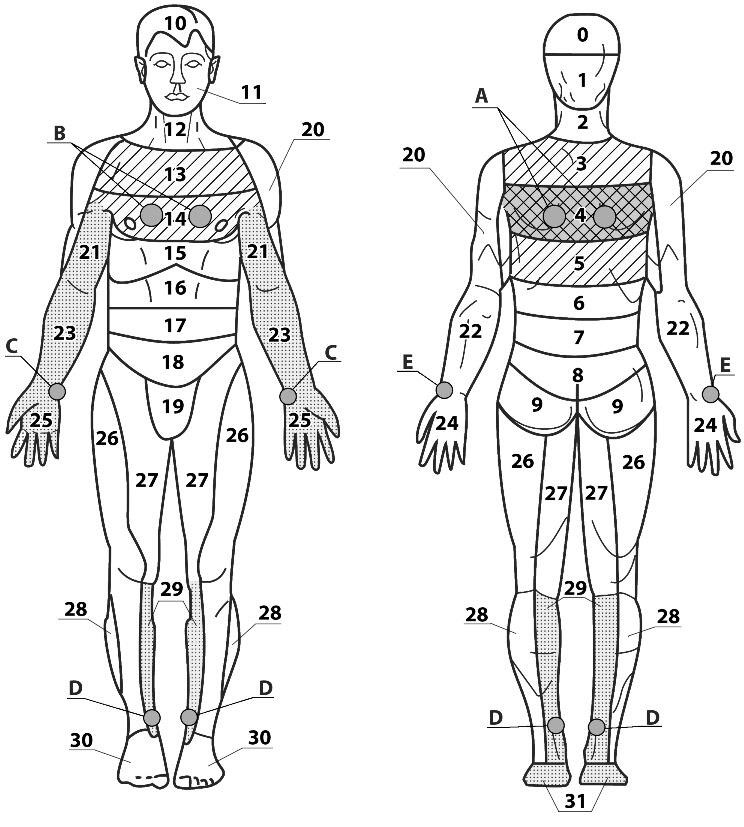
Fig.1
The following applicators are recommended.
Options for applicators for the back and chest area (main and auxiliary zones).
Flat applicators of large sizes: “Large mat”, “Large needle massage mat”, “Chance 6.2x4”, are placed along or across the spine, covering zones 3, 4, 5.

"Chamomile M" "Quadro", "Chance", "Folk", "Needle massage pillow" is used on the back, with the capture of zones 3, 4, 5, as well as on the front surface of the chest in zones 13, 14. On the main and Auxiliary zones can be affected alternately or simultaneously.
The exposure time is 15-20 minutes.

The belt "Baby", "Satellite", "Universal M" - is fixed along the spine or applied in a prone position, like a regular applicator, on zones 3, 4, 5.
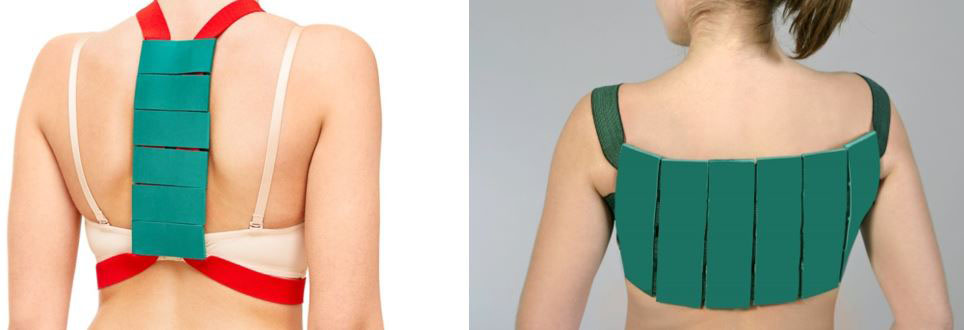
It is also fixed on the anterior surface of the chest on zones 13, 14.
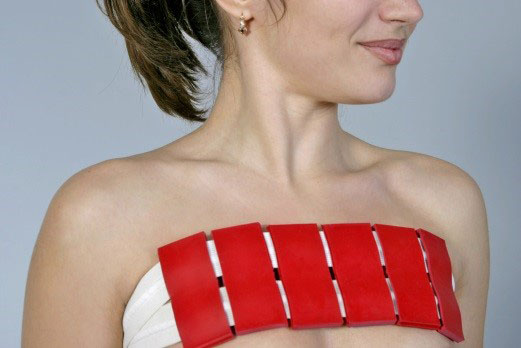
With a small applicator "Sputnik", "Kraplinka" you can act on the pain zone (7-10 minutes) on the front surface of the chest on the right or left (selectively) and the inner surfaces of the wrists alternately (act with vibration or short-term pressing).
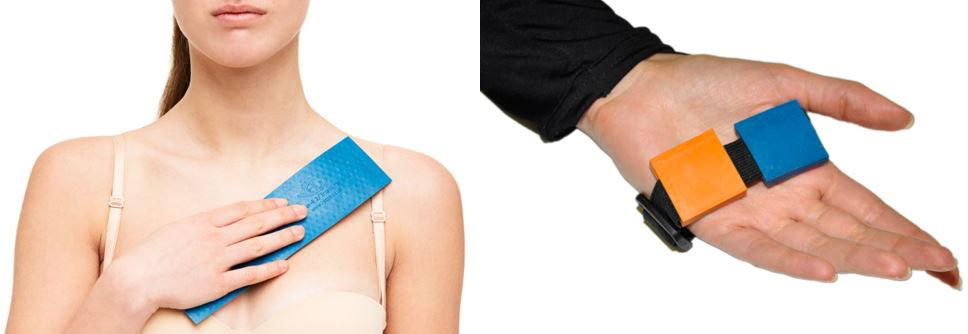
Run-in with "Large Roller M", "Universal Roller M", "Needle Ball" zones 3, 4, 5, 13, 14. Exposure time 8-15 minutes, in the evening 2 hours before bedtime.
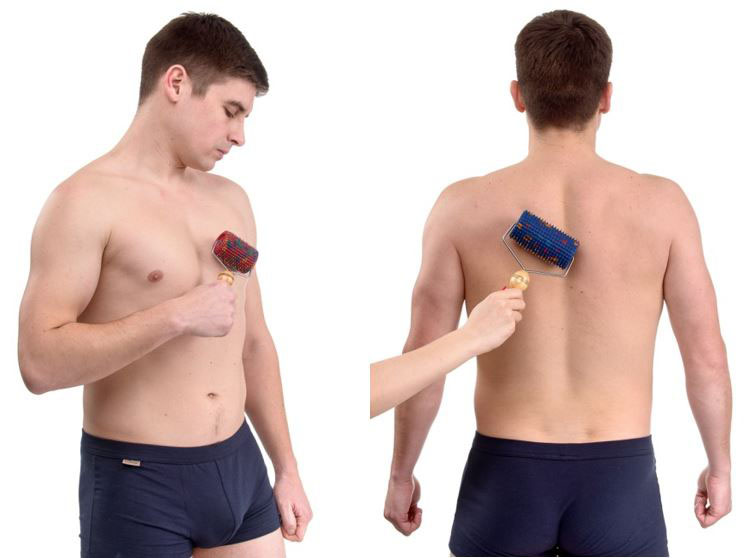
Options for using applicators for additional zones:
The belt “Magic ribbon “Health” 1 cavity 5-7 segment hands are wrapped around: zones 21, 23, 25; legs of zone 29, 31. You can alternately or simultaneously. The procedure is best performed in the supine position, put the limbs on small pillows. The exposure time is 15-20 minutes.
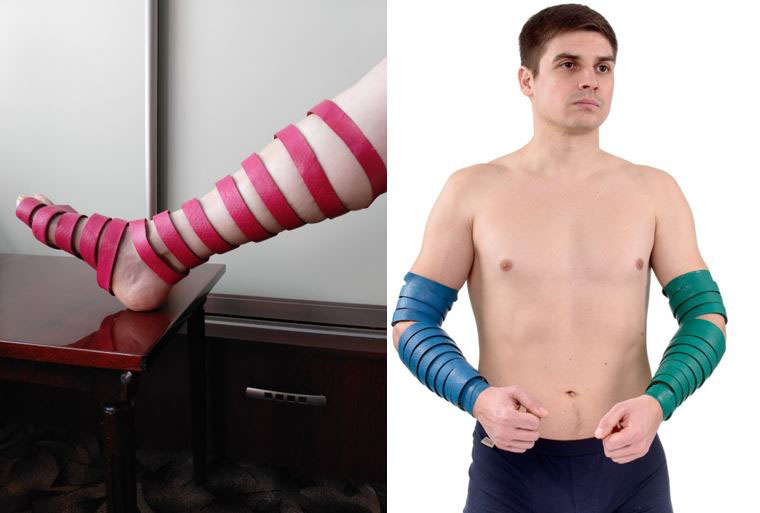
Also, running in with the “Large Roller M”, “Universal Roller M”, “Needle Ball” of additional zones on the arms and legs: 21,23,25, 29, 31. Exposure time 8-15 minutes.
Additional Recommendations
When feeling your body, you can find those places (zones) that will be painful and especially sensitive. Pay attention to the table of Zakharyin-Ged zones (see the article "Zakharyin-Ged Zones"). Decide which organ or group of organs this painful area belongs to. So, with increased sensitivity of the inner surface of the left hand, the zone of the scapula on the left and the left pectoral muscle, one should pay attention to the work of the heart and blood vessels.
Cardialgia (pain in the region of the heart), as a rule, is accompanied by osteochondrosis of the cervical or thoracic spine. With the progression of autoimmune diseases, such as rheumatoid arthritis, ankylosing spondylitis, the work of the heart is affected, which is manifested by arrhythmias, abnormal heart valves, inflammation of the aortic wall, etc.
You need to act on pain points in the chest area in front and paravertebral along the thoracic spine, as well as with a small applicator or roller in the projection areas of the hands and feet. In order to potentiate (strengthen) the impact, it is necessary to include symmetrical points and zones of the opposite side in the recipe. For example, a pain zone on the left - apply on the right.
Angina pectoris manifests itself as attacks of pain behind the sternum or in the region of the heart of a compressive, pressing character, often radiating to the left shoulder, arm, neck. To stop an attack, it is necessary to use a small applicator on the area near the nail bed of the little finger, first on the left and then on the right, the heart correspondence zone on the hand and foot (Su-Jok therapy). The exposure time is 7-10 minutes.
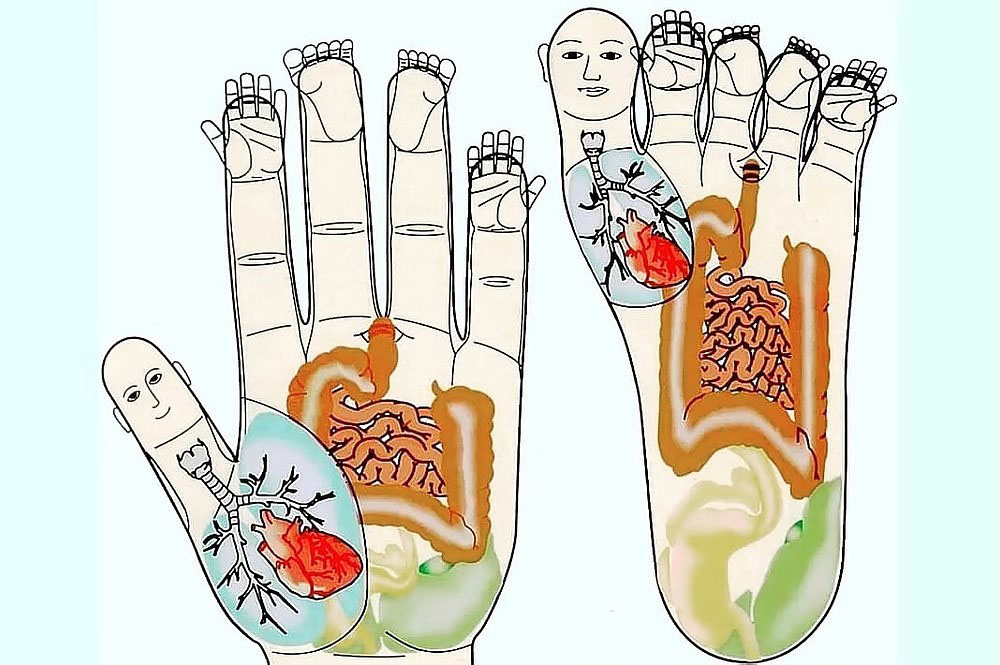
With a “needle-shaped ball”, make light rolling movements or light pressures in the palms, carry out similar movements on the foot with the help of hands or easily roll on the floor without pressure.
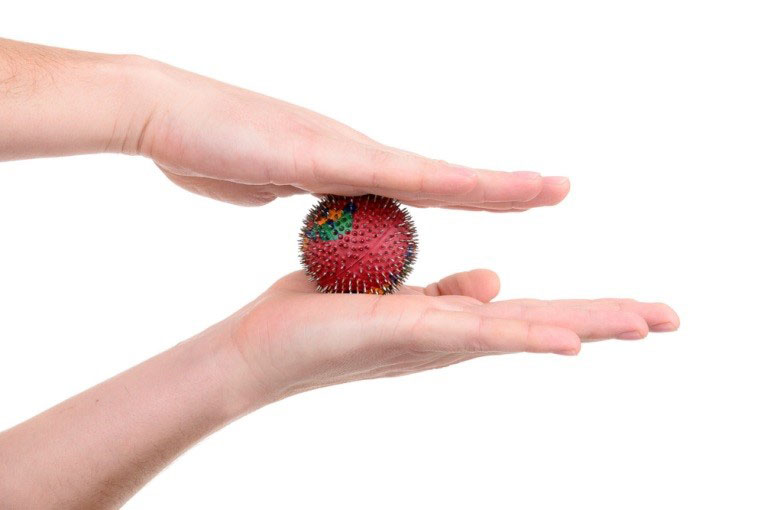
You can find the most painful and sensitive areas, and then act (you can intensively) on them. For the treatment and prevention of angina pectoris, applicators are used on the cervical and middle thoracic spine, forearms, hands and feet. It is also possible to wear small applicators crosswise, for example, at point A on the left, point B on the left, point C on the left, point E on the right, point D on the left and vice versa (during a repeated procedure). Additional processing by the roller of the same zones is possible.
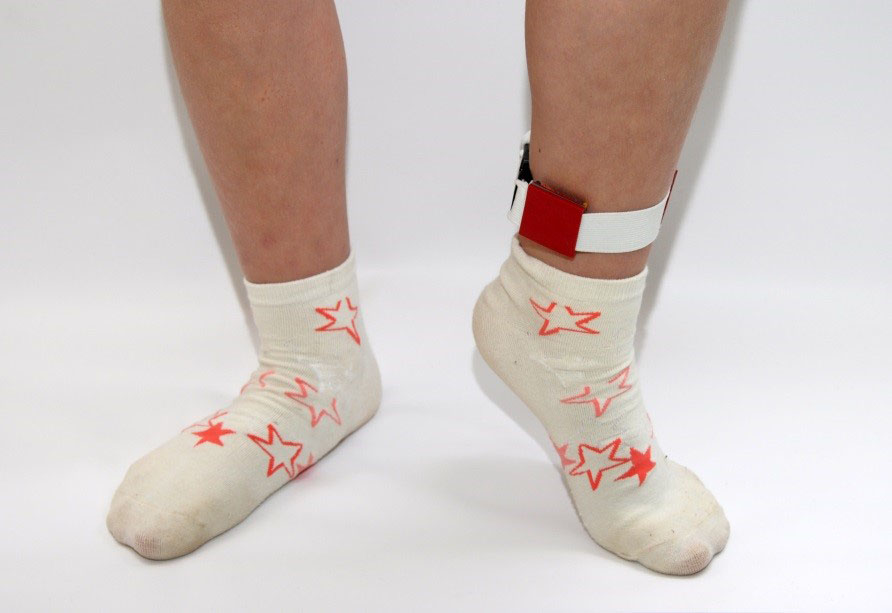
It is better to end the session by exposing the feet using the Insole Plus applicator, the exposure time is 15-20 minutes.
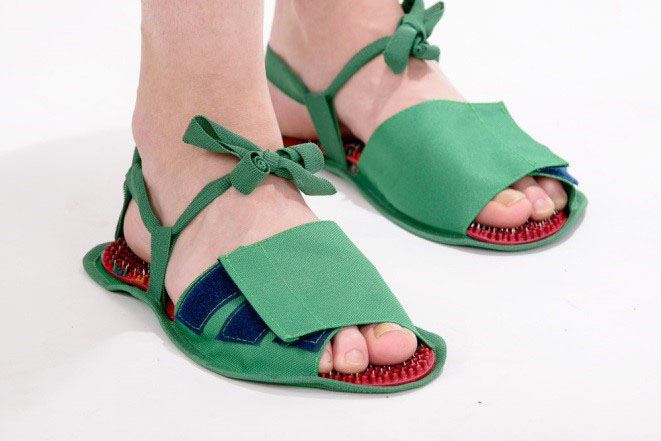
A good relaxing effect is given by massage of the cervical-collar zone, the anterior surface of the chest when using the massager "Pharaoh", "Pharaoh L".
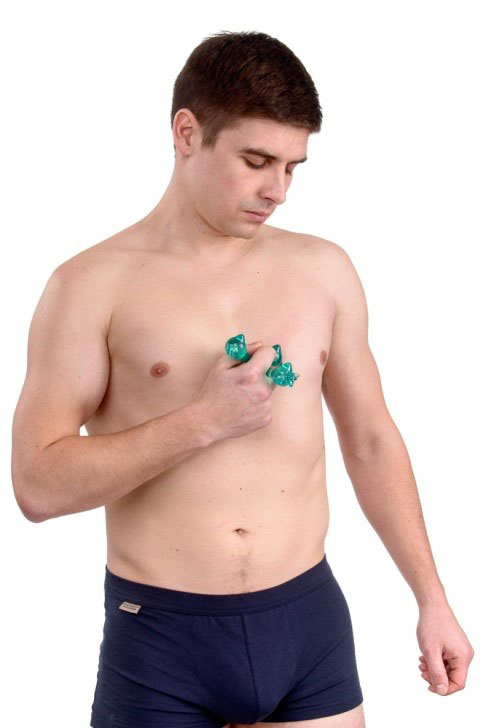
Meditation and breathing exercises
During the procedure, you can create a pleasant, soothing environment, turn on relaxing music. Application therapy helps the mind to disconnect from problems and gives the opportunity to be here and now. During the procedures, various meditative and breathing techniques work especially well, a more pronounced effect of the treatment is observed.
Slow breathing normalizes the heart rate, strengthens the heart and increases resistance to stress.
There are many types of breathing exercises. Everyone can choose what suits him best. It can be breathing exercises according to Buteyko, paradoxical gymnastics according to Strelnikova, Frolov's endogenous breathing, sobbing breathing from Y. Vilunas and others.
All of them are associated with a positive mood, as a result of which the work of the digestive organs and the nervous system improves. These exercises can lower your heart rate, lower your blood pressure, and lower your cortisol (stress hormone) levels by 20%.
For example:
- A five-second inhale, a five-second exhale, an imperceptible pause between inhalation and exhalation. Do 5 minutes 3 times a day.
- Inhale for 6 seconds, hold your breath for 3 seconds, exhale for 6 seconds or 5-3-5, as you like, etc.
